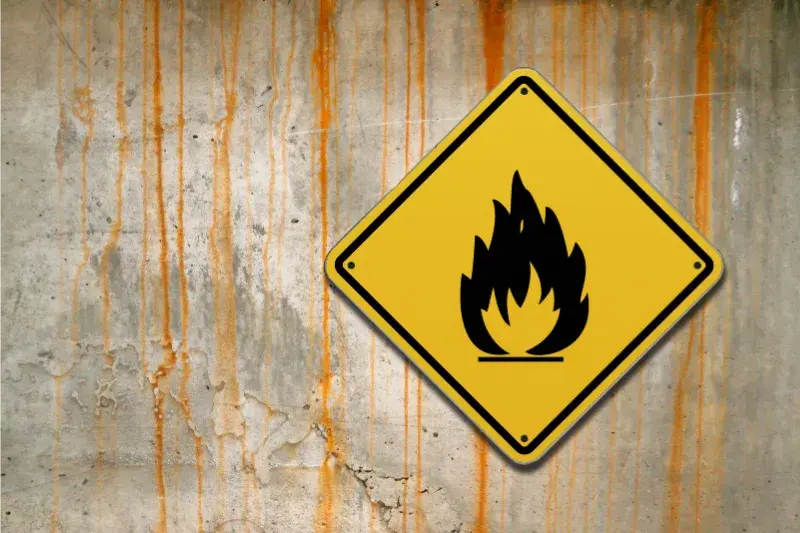Advancing technology has the tendency to improve our lives in a number of ways, keeping us healthier and happier and giving us more methods of solving problems that ail us. This is true even for incredibly destructive, natural forces like fires.
But how exactly has modern technology reduced fire risk, and how should businesses take advantage of this technology?
The Risk of Fire
Fires can be incredibly destructive. If you experience a fire in your home or business, it can immediately threaten the lives of anyone in the vicinity. Even if the fire doesn’t reach them directly, people can be severely harmed or even killed by smoke inhalation or falling debris.
On top of that, fire can consume entire buildings in a matter of hours, costing upwards of millions of dollars in industrial settings. And even if your fire suppression works, if you don’t use a modern, clean agent fire suppression system, the resulting damage could accrue even more costs.
How has modern technology reduced this massive risk?
An Objective Look at Fire Risks
The rate of house fires has fallen precipitously. In 1980, there were around 3.2 fires per 1,000 people, but that has fallen to 1.1 fires per 1,000 in 2022. Vehicle fires are also on the decline. Wildfires have become somewhat more popular in the United States, but we have little direct control over these types of fires.
There are a few main reasons for this overall drop:
- Advanced technology. We can attribute at least some of this decline to general technology advancements. We’ll take a closer look at these in the next section.
- Fire risk awareness. People have also become more aware and cautious about fire risks. We have a much better understanding of what causes fire, how to stop fires, and how to minimize damage resulting from a fire. While there will always be oblivious or ignorant people, most of us take fire more seriously than we did 50 years ago.
- Stricter building codes. Most areas have developed much stricter building codes as well. Codes exist to force businesses and builders to adhere to specific standards for health and safety. Many of these codes are designed specifically to minimize fire risks, among other risks.
- Habit and cultural changes. We can also attribute some reduction in fire risk to changes in our habits and our culture. For example, people are less likely to use traditional wood-burning fireplaces and are much less likely to smoke; these two habits alone were responsible for many structural fires, and now that these habits have declined, we’ve experienced a proportional decline in structural fires.
Advanced Technology and Fire Risk
How exactly have technology advancements reduced fire risk?
There are several areas worth exploring.
- Fire suppression systems. The most obvious advancement is in fire suppression technology. The fire suppression systems have technically been around for over 100 years; the earliest iterations of these life-saving systems were clunky, unreliable, and expensive. Today, fire suppression systems come in far more varieties, offering a wide array of suppression agents, and they can usually be installed both conveniently and inexpensively. For example, clean agent, modular fire suppression systems can often be installed quickly and easily without any major changes to your plumbing.
- Smoke alarms. Smoke alarms aren’t particularly new, but they have gotten more advanced, less expensive, and more widely available. Ideally, your home will have at least one smoke alarm in every bedroom and at least one smoke alarm on every floor. Carbon monoxide detectors are also useful, and they frequently come paired with smoke detectors for convenience.
- Better building materials. We can also attribute some of the decline in fire risk to improved building materials. Engineers and construction professionals now have access to materials that are either fireproof or highly fire resistant, making it far less likely for fires to break out in a vehicle or a structure.
- Safer appliances and electricity. Safer electrical wiring and more advanced, safer appliances have also contributed to a reduction in fire risk. Older, cruder methods of wiring, like knob and tube, were notorious for causing structural fires. And newer appliances typically include built-in failsafes and redundant measures to prevent or mitigate fires.
- Safer cars. Vehicle fires are also far less common these days, thanks to overall safer cars. Engineers and manufacturers have incentives to make their vehicles as safe as possible, and decades of technological advancements have made these designs possible.
Fire will always be a risk, as we’ll never be able to reduce risk factors to zero. But as we gain access to more advanced technology in almost every area of our lives, we’ll start seeing fewer, less destructive fires, and we’ll lose fewer people to this incredibly destructive threat.

